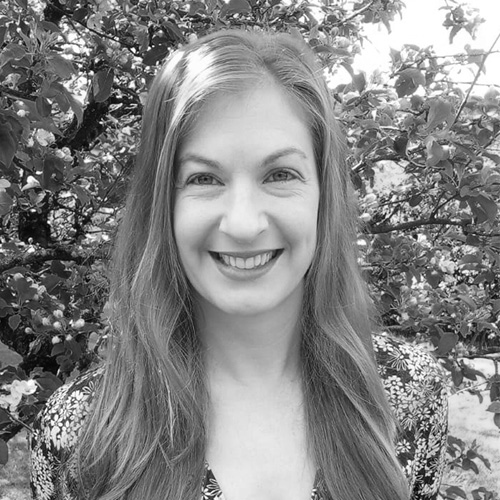Scientific Programme
Physiology & Nutrition
IS-PN09 - Energy intake limitations in athletes: from Caloric Restriction to Time Restricted Eating
Date: 04.07.2025, Time: 13:00 - 14:15, Session Room: Castello 2
Description
Effective energy intake management is essential for athletes aiming to balance performance, recovery, and long-term health. While strategies like Caloric Restriction (CR) and Time-Restricted Eating (TRE) can offer benefits by controlling body composition and improving metabolic efficiency, inadequate fuelling can also lead to unintended consequences, such as energy deficits. Sustained and/or severe energy deficit may represent one of several stressors to which athletes are exposed and influence performance, injury risk, and recovery, especially in athletes with high training loads. This symposium will delve into the complex effects of reduced energy intake, including both its positive applications and potential downsides. We will examine how CR and TRE can be strategically applied to meet athletic goals while minimizing the risk of energy deficiency, hormonal disruptions, and compromised health.
Chair(s)

Antonio Paoli
University of Padova, Dept. Biomedical Sciences
Italy

Speaker A
Jose Areta
Liverpool John Moores University, School of Sport and Exercise Sciences
United Kingdom
Read CVECSS Rimini 2025: IS-PN09
The effect of low energy availability in skeletal muscle: possibly not you think
Low energy availability is typically vilified in the contemporary mainstream scientific literature as a factor negatively affecting sports performance. However, there is a lack of well-controlled, unbiased studies showing positive or negative effects of acute or chronic low energy availability on performance. Importantly, beyond the potential decrease of skeletal muscle glycogen in diets with low energy availability, there is nearly no mechanistic evidence providing explanations on how low energy availability may affect skeletal muscle, a key tissue for physical performance. To provide some insights in this under-explored area, this talk will provide an overview of the effects of low energy availability on skeletal muscle and show findings of our research on skeletal muscle proteomics of healthy exercising men exposed to pronounced low energy availability. We show that a short (5-day) exposure to energy availability of 10 kcal/kg FFM/day produces a significant shift in skeletal muscle proteome, resulting in a coordinated increase of mitochondrial proteins and key metabolic proteins, while reducing the expression of key proteins of the extracellular matrix and cytoskeleton. Is this positive or negative? Difficult to tell, though the findings are aligned with positive effects of energy restriction in maintenance of function in life-long caloric in a number of animal models, showing improved healthspan and lifespan.

Speaker B
Eimear Dolan
University of Sao Paulo, Faculty of Medicine
Brazil
Read CVECSS Rimini 2025: IS-PN09
Energy Compensation: Where Does the Energy Go?
Athletes sometimes consciously plan to induce an energy deficit in an attempt to attain a desired body mass or composition. This could involve increasing exercise energy expenditure by increasing the training load, reducing energy intake via caloric restriction, or a combination of the two. Total energy expenditure comprises the sum of various process, including resting metabolic rate, the thermic effect of food and activity energy expenditure, which includes both exercise expenditure and non-exercise activity thermogenesis (NEAT). Increasing training load in an attempt to increase total energy expenditure assumes that caloric expenditure between these processes is additive, however this assumption has been challenged, and the Constrained Model of Total Energy Expenditure posits that across the long-term, increasing activity energy expenditure may not necessarily lead to a commensurate increase in total energy expenditure, but instead, may trigger compensatory energetic savings in other processes. But could this really be true for elite athletes, whose estimated training energy expenditure may exceed all other processes combined? Within this talk, I will describe concepts related to energy constraint and compensation, from the point of view of elite athletes. Key questions to be addressed include whether total energy expenditure is additive or constrained, the mechanisms and nature of energy compensation, and the specific processes from which compensatory energy savings might arise to offset increases in exercise energy expenditure. I will also discuss the practical implications of energy constraint and compensation for athletes who purposefully increase training load in an attempt to induce an energy deficit and lose weight, along with the potential health and performance related consequences of energy compensation for athletes.

Speaker C
Antonio Paoli
University of Padova, Dept. Biomedical Sciences
Italy
Read CVECSS Rimini 2025: IS-PN09
Train, eat, fast: Time Restricted Eating for athletes
Time-restricted eating (TRE), a dietary strategy that confines food intake to specific time windows, has gained recognition as a potential approach for optimizing athletic performance and recovery. TRE has been shown to influence key physiological processes critical for athletes, including metabolic flexibility, hormonal regulation, and inflammation modulation. Thus, this time-related energy intake limitation may represent a hormetic stimuli for human organisms. This presentation reviews the latest evidence on TRE in athletic populations, focusing on its effects on performance, body composition, and recovery. Key findings include enhanced fat oxidation, preservation of lean muscle mass, and improvements in metabolic health markers, particularly when TRE is integrated into structured training regimens. Our findings indicate that, in resistance-trained athletes, long-term TRE improves inflammatory markers and increases muscle strength without significant changes in muscle mass. Additionally, preliminary evidence for our laboratory suggests that TRE may positively influence immune responses to training in endurance athletes. While TRE shows promise, its application in high-performance sports requires careful consideration of factors such as meal timing, energy intake, and training demands. This presentation also addresses a critical gap in the literature: although substantial evidence exists for the health benefits of TRE, there is limited research on its direct effects on athletic performance. To explore the rationale for using TRE in athletes, this talk will dissect the physiological and biological mechanisms—such as the repeated, moderate increase in ketone bodies during fasting periods—that may modulate the bodys responses to the combined effects of fasting and exercise. Targeted at sports scientists, nutritionists, coaches, and athletes, this work contributes to the evolving field of nutritional periodization and highlights TRE’s potential role in enhancing athletic performance and overall health.
